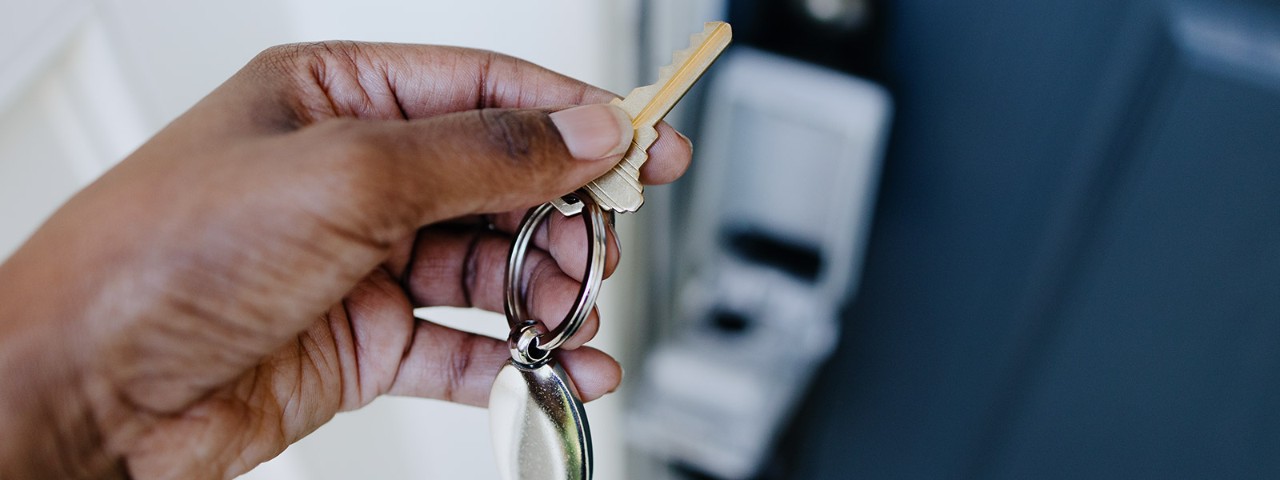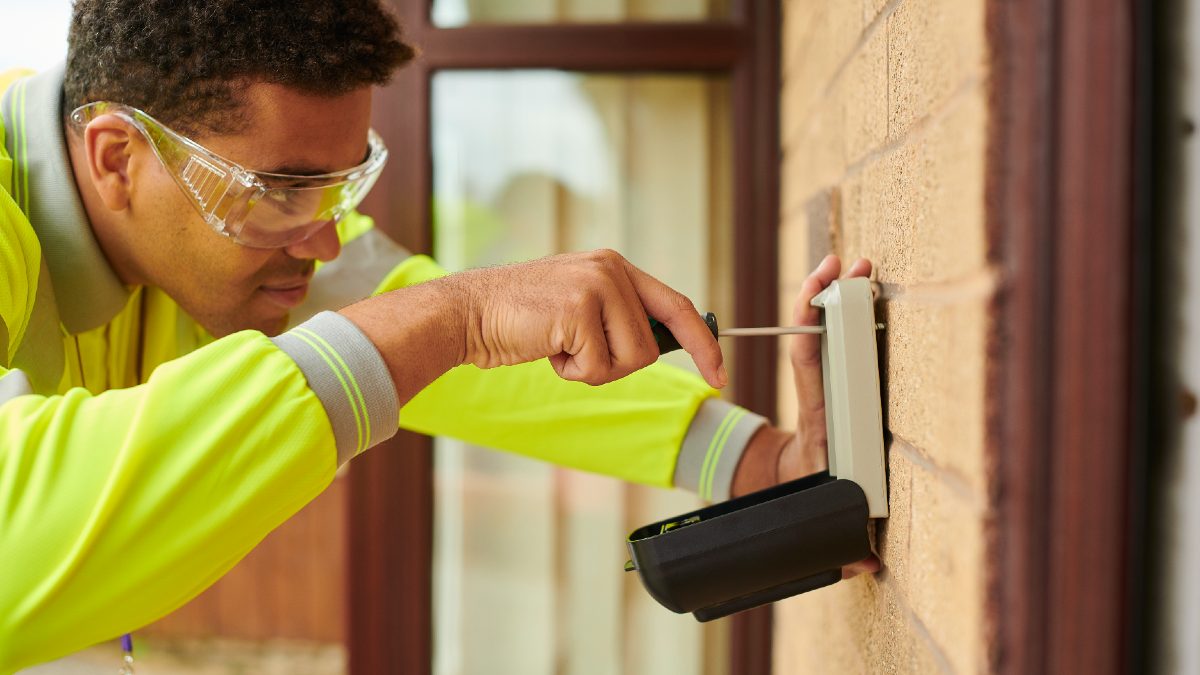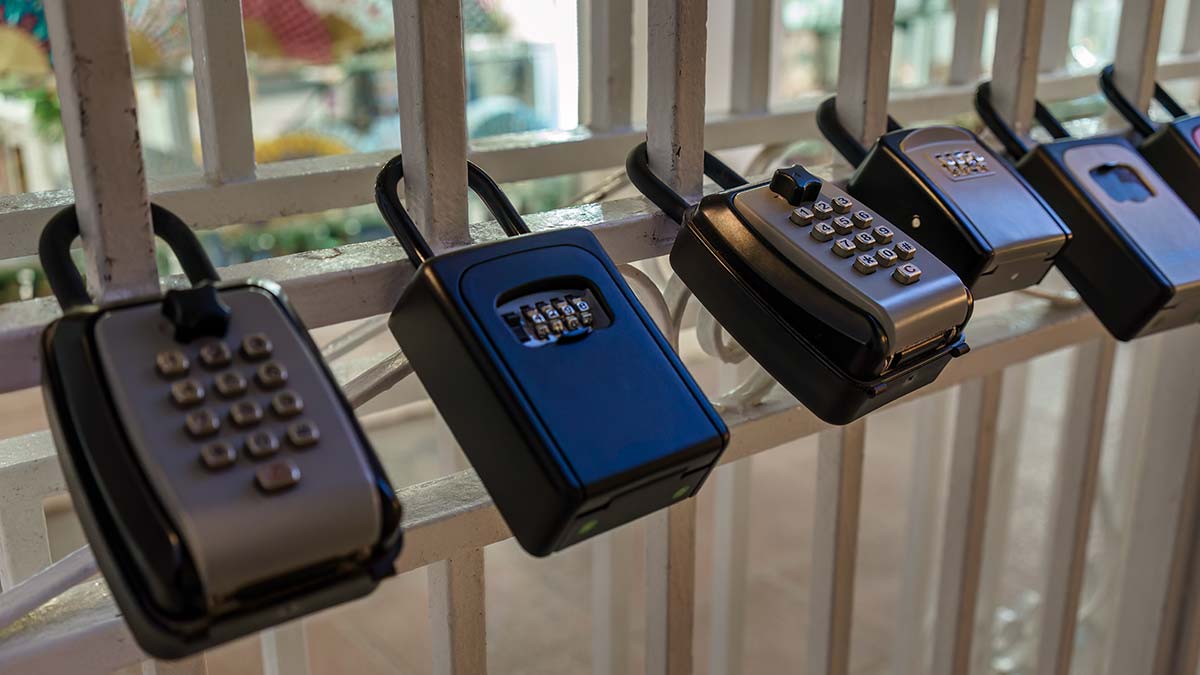With warmer weather already here, RACV has provided bushfire preparation advice and a series of safety tips for Victorians to help prepare their homes for the increased risk of bushfire this summer.
Key safe security and theft prevention for homes and apartments

Key safes are popular across Victoria for renters and homeowners who need to allow third parties into their homes, whether for care, chores or simply when they forget their own keys.
But key safes are not immune to the risk of burglars, who may use tools to destroy key safes and access the keys to your home so they can steal your valuables.
Here’s everything you need to know about increasing key safe theft, and how you can protect your home.

Make sure to install your key safes properly for maximum security. Image: Getty
What is a key safe?
A key safe (sometimes called a lock box) is a small but strong storage box that allows you to store spare keys outside a building. They are usually protected by a keycode that must be correctly entered on its keypad to open.
Key safes are used for back up entry: if you lose your keys or lock yourself out, you can get into your home without needing to call out a locksmith. Aged-care workers, real estate agents, domestic cleaners, and bed & breakfast operators also find key safes helpful to let themselves or their customers into properties. Schools and businesses may keep a large key safe indoors to store keys to multiple locations that various employees need to access.
How are key safes vulnerable to attack?
Key safes may be strong, but unlike many home safes, they cannot easily withstand impact. That makes them into to break into with a hammer or similar tools. A few heavy smashes and your lockbox could be broken into.
More: How to safely store your belongings in apartment car parks

Key safes may be handy, but they are vulnerable to theft, with hammers or similar tools often used to break them. Image: Getty
How can I store my keys safely?
If you need a key safe for personal or business reasons, purchase one that is weatherproof and crowbar-proof. Certain digital lockboxes even log every entry on a smartphone app, so you can be alerted to an unintended entry.
Make sure to install your key safe in a discreet area that can’t be seen from the street. Don’t put it by the door or at eye level, or next to your garage (which is another area targeted by burglars). If a potential burglar can’t find a lockbox, your keys will remain safe.
Follow manufacturer instructions and attach the key safe to a solid surface like concrete or brickwork.
Finally, regularly change your key safe’s code for extra security.
These tips will all increase the length of time a potential burglar would spend searching for a way in. With the average burglary lasting only eight minutes according to Neighbourhood Watch Victoria, it means that burglars will be easily dissuaded from trying to break into your home.
More: Best ways to stop losing your keys
Update your home and contents insurance coverage
It’s also important to check whether your current home insurance policy provides the level of protection you need in the event of theft.
Make sure you have the right type of insurance and the amount you are covered for is adequate, especially increasing any limits on valuable items like jewellery, watches or electronics, which are attractive to thieves.
The information provided is general advice only. Before making any decisions please consider your own circumstances and the Product Disclosure Statement and Target Market Determinations. For copies, visit racv.com.au. As distributor, RACV Insurance Services Pty Ltd AFS Licence No. 230039 receives commission for each policy sold or renewed. Product(s) issued by Insurance Manufacturers of Australia Pty Ltd ABN 93 004 208 084 AFS Licence No. 227678.


